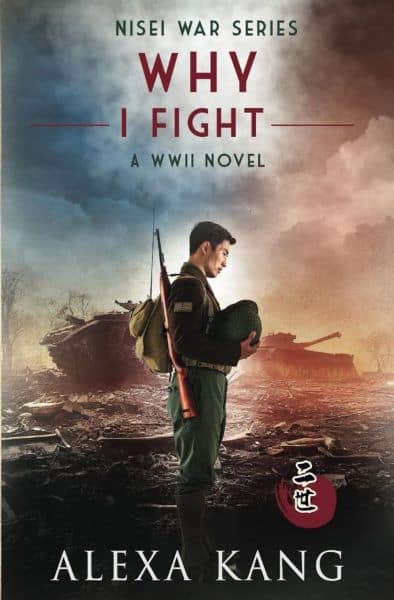What’s in Mrs. Hale’s Receipts for Million?
4095. Give yourself as you are, what you are, and how you see it. Every man sees with his own eyes, or does not see at all. This is incontrovertibly true.
First, an update on The Brisling Code and its Audio Book

Last September I launched my third novel in the Jøssing series, The Brisling Code. Immediately, I organized a Kickstarter campaign to hire Chris Humphreys again to narrate it. I’m happy to say the campaign was successful. He spent October narrating it and now the files have been uploaded. Just waiting on a final tweak on the audio book cover, which has to be a specific size. Then I can upload. It’s on target for release in early January. in the meantime, it’s entered in the seasonal lit contests and I’m happy to report that it has made it on the short list for the 23 Goethe Awards and is on the long for the Hemingway for 20th war fiction.
The Brisling Code is also getting excellent reviews, both editorially and from readers. One wrote:
The Brisling Code provides an exciting prequel to Oakley’s award-winning The Jossing Affair and its sequel, The Quising Factor. She brings vividly to life the struggles of the Norwegian resistance in the early 1940s. The novel embeds the reader in exceptional spy craft and the cat-and-mouse treachery between brutal occupiers and ordinary underground citizenry.
I couldn’t put it down, and read it in two 4-hour chunks. It’s a must-read for those who love realistic WWII historical fiction.
Listening to the audio files for The Brisling Code has done a curious thing: I find myself thinking about the sequel I had originally planned. Why? Because there are so many stories to be told about Norway in WWII and the aftermath. I’m finding myself really embedded in this part of the world in WWII as there are few stories about ordinary life in occupied Norway and the various elements of the resistance against the Nazis. The more action events like the heavy water raid get most of the attention. So many WWII novels seem to revolve around France and the rest of the continent leaving out the five year occupation of Norway and Hitler’s obsession to make it part of some greater Reich community. (At one point there were plans to build a new city south of Trondheim that would accommodate 400,000 German personnel) With so much going on in a world that often mimics events in the 1930s and 1940s, telling the little known stories is important. Whether I’m writing about Norway or and Pacific NW, these forgotten bits of history are not only fun to research and write, but important.
What year would I write about? Most likely 1948, just a few years after liberation and the Legal Purge in Norway. I’d be going back to my fictional fishing village in the Trondelag region to catch up with people there and how the war still weighs on my hero, Tore Haugland, and the woman he loves. Norway is barely getting back on its feet.

Writing About WWII and the IA Experience
While developing the rewards for my Kickstarter campaign for The Brisling Code, I asked fellow writer of WWII novels, Alexa Kang, if she would be interested in supporting me with one of her novellas. She said, yes. I met Alexa in a WWII authors group several years ago. What caught my attention was her novels set in Shanghai. I hadn’t considered WWII in that region before. It’s a rich, complex history we don’t hear much about, but was still very important geopolitically leading up to and during the war. We’re sharing blog posts to talk about writing WWII novels off the beaten track.
So, Alexa, take it away!


Why I Fight was the most challenging for me to write, because I had to learn a lot about battles, military customs and operations in addition to the usual historical research. But with the help of my editor, Aaron, who is a US Army veteran, I think the story turned out well. I hope readers will check out this series. They’ll be treated to another part of World War II that is rarely written about today.
This novel is the third book in my Nisei War Series, a set of standalone stories with interlinked characters, each with their own unique representation of the Japanese-American experience during WWII. I wrote this series to bring to readers a full spectrum of the what the Japanese-Americans went through beyond the more well-known ordeal of internment camps. The first book, Last Night with Tokyo Rose, is about Katsuo’s younger brother. It is an in-depth look at the discrimination Japanese-Americans faced growing up in the pre-war era, and the conflicts of identity they had to confront due to their Japanese heritage.
The second book, The Girl with a Star-Spangled Heart, is about Vicky Kondo, a young woman who makes a choice to serve with the U.S. Women’s Army Corps. The story shows the experience of Japanese-Americans from Hawaii during the pre-war and war era, which differed from those in mainland USA, and how JA women who served overcame racism and sexism of that time period.
Thank you, Janet, for featuring my new release to your readers. Why I Fight is based on the true story of the all-Japanese-American 442nd Regiment, the most decorated unit of its size in US Army history. The main character, Katsuo Sakai, embodies the fight by Japanese Americans to prove to their country they’re loyal citizens after Japan attacked Pearl Harbor, even as their families are interned back home. Katsuo is part of the 522nd Field Artillery Unit, which also took part in liberating one of the Dachau sub camps.
Readers can find me on my author Substack: https://alexakang.substack.com
My author page on Amazon: https://www.amazon.com/stores/Alexa-Kang/author/B01AXTLTS4
My website: https://alexakang.com
Facebook: https://www.facebook.com/roseofanzio/
And thank you, Alexa for helping meet my goal on Kickstarter.
Wishing all my readers a very happy holiday and a excellent new year.

